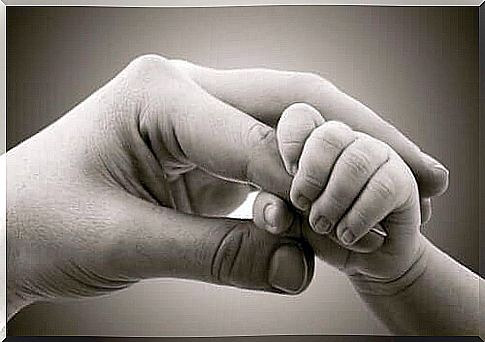The Neurobiology Behind Human Ties

It is characteristic of mammals to attach to others. Therefore, the research in the neurobiology behind human bonds is also based on studies of animals. Recent studies suggest that association is established in the interaction between oxytocin and dopamine in the corpus striatum.
The human bonds you attach to others over the course of your life can be fundamentally changing. In fact, the positive bonds that you form later in life have the potential to repair the damage from unhealthy attachments from earlier in your life.
What seems to be pretty solid is that the different human bonds are based on the same neurobiological forms of attachment. It is generally about a consistency between behavior, and the integration of networks in and under the cerebral cortex. These networks have to do with reward and motivation, as well as simulation and mentalization.
The neurobiology behind human ties
According to Ruth Feldman, who researches the neurobiology behind human bonds, we should study the bonds that are linked between mammals from a developmental perspective. The associative parts of the cerebral cortex are connected by early experiences in children, aged 2 to 4.
The bonds we form later, such as to boyfriends or close friends, reuse the same mechanism. That is, the one that was established in the early bond between mother and child in the early “sensitive periods”.
Researchers define these “sensitive periods” as early and special windows in time. This is where the brain experiences certain things in the outside world that contribute to good maturation. In connection with attachment, it is about the typical upbringing behavior of the mammals.

Proposed neurobiological models for understanding human attachment
In his research, Dr. Feldman offers different views on the neurobiology behind human ties:
- As mentioned above, research into human ties should have a developmental perspective. Therefore, the neurobiological system supports the association between two mammals. The mother and her offspring form this relationship in the early, sensitive periods of life.
- The continuity of neurobiological systems maintains human connection. Human ties reuse the basic mechanism that was founded in the mother-child attachment. It is used to form other bonds through life (for example, romantic relationships or close friendships).
- Human bands are carefully selected and last a long time. Ties are the purpose of attachments, and they can last your entire life.
- Attachment is based on behaviors triggered by behavioral patterns that are specific to a species, community, or individual. Tying is a process that goes from top to bottom. Attachment-related behaviors activate the brain and the neuroindocrine system.
- The coordination of biological behavior is a key concept of human attachment. In other words, the connection between the non-verbal behavior and the coordinated physical response between two people in social contact helps to define human ties.
- Both the oxytocin system and the link between dopamine and oxytocin play a role in motherhood. They are also involved in fatherhood, parenthood, romantic relationships and close friendship. The uptake of oxytocin and dopamine into the cerebral cortex fills the attachment with motivation and liveliness.

More theories
- When people form bonds, greater activity and a closer interaction between the relevant systems is seen. In periods when people are connected, one can see an activation of the closest relationships between the systems that support attachment, reward, and stress management.
- Human ties promote balance, health and well-being. Social ties improve health and mood. In turn, social isolation increases stress, harms your health and can lead to death.
- The patterns of attachment pass from one generation to the next. Behavioral patterns that you experience early in life regulate the availability of oxytocin, as well as the localization of the receptor in a baby’s brain. In this way, it programs the ability to raise the next generation.
- The connection between mother and child, and the mother’s closeness, develops the organ we call the brain. This allows the child to function in his social environment. The immature brain of a mammal, and the need to be close to a mother who is breastfeeding, allow the mind to constantly respond to the social environment.
- The bonds you make throughout life are life-changing. Healthy relationships that you form later in life can actually repair negative relationships from your early years. The plasticity of the brain and the fact that its nature is based on behavior mean that later bonds can actually rearrange the neural networks and, at least in part, repair early, negative experiences.
In conclusion, it seems that the foundation of the neurobiology behind human bonds is the interaction between oxytocin and dopamine in the brain. It also appears that these systems in the brain are shaped through the infant’s attachment.
Therefore, it is interesting to know that these systems are recycled later in life. They are activated when we form other bonds, such as friendship or love.









